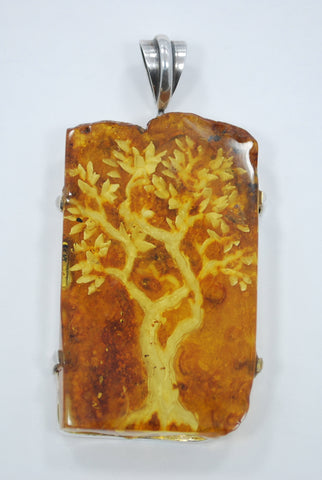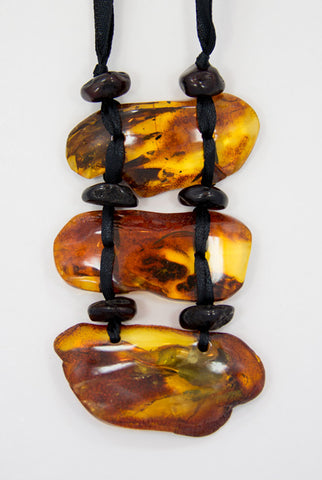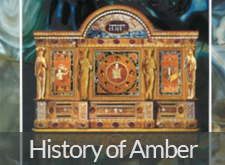Amber in Myths and Legends
According to ancient Greek myth:
One day Phaeton, the son of Helios, the God of sun, managed to convince his father to allow him to drive his horse-drawn sun chariot down the firmament. The father agreed, but as soon as the horses felt that the charioteer was inexperienced, they bolted. The sun burnt the African land to ashes, tanning its inhabitants black. So as to prevent further damage, Zeus was forced to strike Phaeton with a lightning into the river Eridanus. Phaetons sister, Heliades, lamented his fate, cursing gods, so they were turned into poplar trees as punishment. Grieving, they kept crying, and their tears became resin, which turned to amber. Years later, the sea is still throwing the sister’s amber tears to the shore.
Lithuanian Myth:
Lithuanian amber myth tells us about the story of lost love. Perkunas, God of Thunder, was the father God and his daughter was Jurate, a mermaid who lived in an amber palace in the Baltic. Once a day, a fisherman named Kastytis would cast his nets to catch fish from Jurate's kingdom. The goddess sent her mermaids to warn him to stop fishing in her domain. He did not stop, so Jurate went herself to demand that he stop. Once she saw him, she fell in love and brought him back to her amber palace. Perkunas, knowing Jurate was promised to Patrimpas, God of Water, was angered to find his daughter in love with a mortal. Perkunas destroyed the amber palace with a bolt of lightning to kill her mortal lover. Her palace was destroyed and Jurate was chained to the ruins for eternity. When storms in the Baltic stir the sea, fragments from the amber palace wash up on shore. Pieces in the shape of tears are particularly treasured, as they are the tears from the grieving goddess, as she weeps tears of amber for her tragic love.
The Chinese believed that Amber was the soul of a tiger, which had died and passed into the earth transforming into pieces of Amber. Amber was supposed to give its wearer access to the tiger’s courage.
Amber was a stone sacred to the Viking goddess Freya. When she could not find her husband Odin, she wept. When her tears fell on the rock. They turn gold. When they fell into the sea, they turned into amber. For Native Americans and Slavic people of Northern Europe, and Neolothic times, amber was a sacred symbol of the sun. To early Christians, amber signified the presence of the Lord.
BALTIC AMBER:
Amber, the stone which raised the interest of Paleolithic man, comes from the ominously roaring cold seas Baltic and North Sea, it appeared on the beaches left by the billows after the storms, which seemed unusual and could suggest that amber hides an exceptional supernatural power a man would very much like to possess.
This opinion is still popular the special resistance of Amber to all damaging factors could suggest that it hides a powerful force. Various salts contained in seawater and ceaseless movement destroy everything – even granite rocks turn to sand in time. Amber however has managed to live for hundreds of thousands of years, indestructible, and what is more it managed to keep its flawless appearance and aroma.














